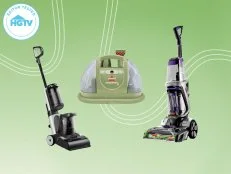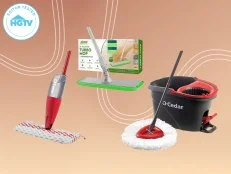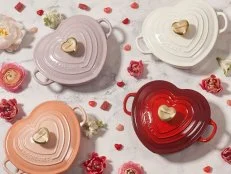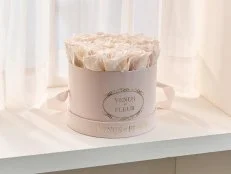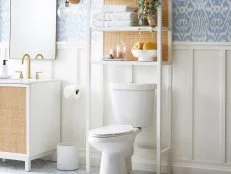How to Keep Your Kitchen Pantry Organized and Tidy
Follow these 10 simple steps to organize your kitchen pantry, and discover the best food storage products and organizers to help keep it clutter-free.
Organizing the pantry is no small feat. You need patience and a keen eye to sort through all of the canned goods, cereal boxes, snack pouches and miscellaneous baking ingredients that have piled up. And then, once everything's organized, you need the whole family's cooperation to keep your pantry tidy.
But first, you need a game plan — which is where we come in. Here are 10 simple steps for organizing your pantry, plus our go-to products to help you get started.

Brittney Gazaway
What to Consider When Buying Pantry Organizers
Transparency: While it's certainly tempting to purchase matte black or glazed ivory canisters, we suggest sticking with clear bins as much as possible. The transparent sides will allow you to see your supplies and keep track of what's still in stock. Clear bins are also easier to mix and match, which will help your space look more uniform.
Stackability: Every inch of space counts in a pantry. So, when shopping for food storage containers, consider how they'll fit together. Square or rectangular containers with flat lids stack easily and will allow you to fit more items on the same shelf.
Functionality: Your organizers should make sense for the whole family. (Note: If they're easy to use, your partner or children will be more likely to keep the pantry clean.) If you have little kids, look for large open bins or containers with easy pop or flip-up lids. If you have tweens or teens, opt for containers with locking or screw-top lids for an airtight seal.
1. Purge Old + Expired Items
Empty your entire pantry, and thoroughly clean it before you begin the organization process. Check expiration dates, and toss anything that's past its prime or no longer in use. This will free up space in your pantry and help things stay organized longer.
2. Take Inventory
After clearing out old items, you can easily see what's left to organize and start assigning storage containers. Make a list of your pantry staples and update it regularly. When it's time to go grocery shopping, take your list with you.
3. Categorize
Next, place like-items together. A lazy Susan makes it easy to keep oils, condiments, snacks or baking essentials in one place so you can quickly find what you need.
4. Use Clear Containers for a Clean Look
Busy packaging can make your pantry look cluttered. Remove any plastic bags or cardboard boxes, and decant dry ingredients into clear canisters. Odd-shaped items, like chip bags and root vegetables, fit nicely in bins as opposed to being stacked loosely on the shelf. Choose clear food storage containers to keep everything looking cohesive.
5. Label Everything
Put labels on bins, containers and shelves so every member of your household knows where items are located. A Bluetooth labeler makes it quick and easy or try erasable chalkboard labels so you can update the label often. An old-school embossing label maker is inexpensive and provides a neat, retro look.
6. Utilize Doors
If you have doors on your pantry, hang organizers over the inside to free up shelf space. Canned goods, spices, oils and jars are usually good fits for these types of organizers.
7. Make a Kid-Friendly Spot
Fill a bottom shelf with water bottles, snack bins and cereal dispensers, so your kiddos can help put away groceries and grab something to eat. Use bins with built-in dividers to offer a variety of healthy choices (like protein bars, fruit gummies and crackers). Visibility and labeling are key so kids can keep up with the organization.

8. Use Extra Wall Space
If you have it, wall space can be a game-changer for organizing a pantry. Hooks can hold non-food items like aprons, brooms and reusable grocery bags. You can also use a wall-mounted bag dispenser to hold trash bags and easily replace what's in the can.
31 DIY Ways to Maximize Pantry Space 31 Photos
9. Add Shelf Liners
Shelf liners can help prevent produce from falling through wire shelves and boxes from tipping over. Liners can also keep wet ingredients, like oils and condiments, from slipping off the shelves and spilling onto the floor.
10. Keep It Up
Your pantry can get disorganized after a while. To help maintain your space, always put items back in their appropriate spot, and get the whole family on board by keeping food accessible and visible. Schedule a quick cleaning once or twice a month to make sure that everything is up-to-date and in place, so you don't have to spend hours organizing again.








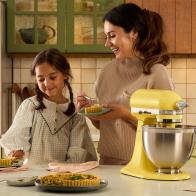










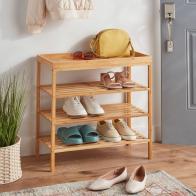
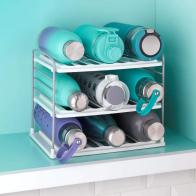



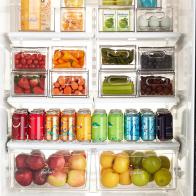








.jpg.rend.hgtvcom.196.196.suffix/1738869041672.jpeg)

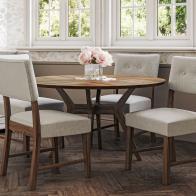













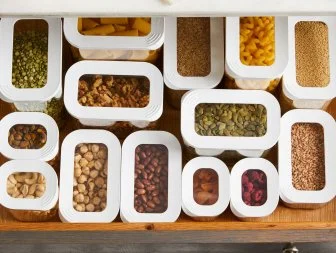
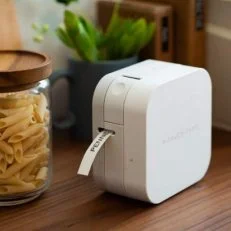

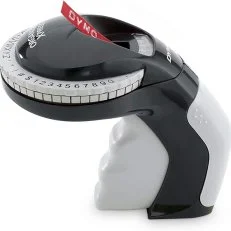
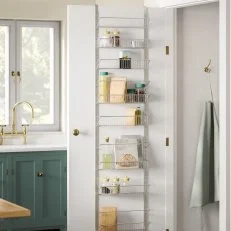

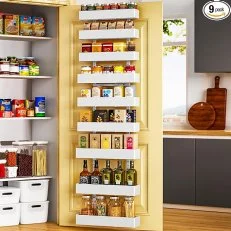






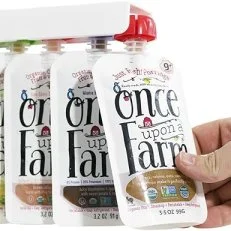






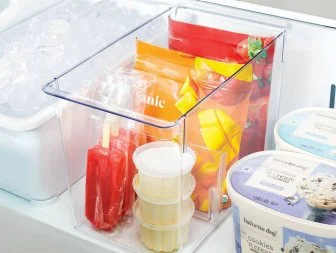












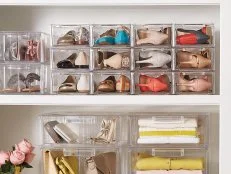

.jpg.rend.hgtvcom.231.174.85.suffix/1738869041672.webp)











